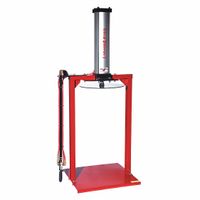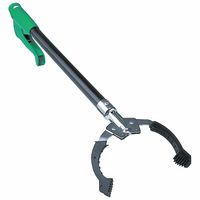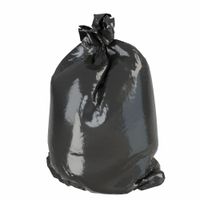Call +(254) 703 030 000 / 751 483 999 / 721 704 777
- Home
- Cleaning And Janitorial
- Waste Recycling Trash Supplies
.....Read More
Frequently Asked Questions
What are the best practices for recycling and waste management?
The best practices for recycling and waste management involve a multi-faceted approach aimed at minimizing environmental impact and maximizing resource recovery. Key strategies include:1. Reduce: The most effective practice is to reduce waste generation at its source. This means conscious consumption, opting for reusable products, buying in bulk to minimize packaging, and avoiding single-use items.
2. Reuse: Before disposing, consider if items can be reused. This applies to containers, clothing, and even furniture. Donating usable items extends their life and reduces the need for new production.
3. Recycle: Proper sorting of recyclable materials (paper, plastic, glass, metal) is crucial. Understanding local recycling guidelines helps prevent contamination and ensures materials are processed efficiently.
4. Compost: Organic waste, such as food scraps and yard trimmings, can be composted. This diverts a significant portion of waste from landfills, reducing methane emissions and creating nutrient-rich soil.
5. Responsible Disposal: For waste that cannot be reduced, reused, or recycled, responsible disposal is necessary. This includes proper handling of hazardous waste (e.g., batteries, electronics, chemicals) through designated collection points to prevent environmental pollution.
6. Education and Awareness: Promoting awareness within communities and businesses about waste hierarchy and proper waste management techniques is vital for successful implementation.
7. Policy and Infrastructure: Governments and municipalities play a critical role in establishing supportive policies, providing accessible recycling facilities, and investing in waste-to-energy technologies where appropriate.By adopting these practices, individuals and organizations can significantly contribute to a more sustainable future, conserving resources and protecting the environment.
How can I reduce waste in my home or business?
Please specify what you would like me to elaborate on.
What materials can be recycled and what cannot?
Recycling is the process of converting waste materials into new materials and objects. Many common household items can be recycled, including paper (newspapers, magazines, cardboard), plastics (bottles, containers, some packaging), glass (bottles, jars), and metals (aluminum cans, steel cans).
However, not all materials are recyclable, and some require special handling. Items that typically cannot be recycled through standard curbside programs include plastic bags and film (which can jam machinery), Styrofoam, ceramics, incandescent light bulbs, broken glass, batteries, and electronics (e-waste). These items often require specialized collection or disposal methods due to their composition or potential hazards. Always check with your local recycling guidelines, as acceptable materials can vary by region.
How do I properly dispose of hazardous waste?
Proper disposal of hazardous waste is crucial for environmental protection and public health. Start by identifying what constitutes hazardous waste; common examples include batteries, paints, motor oil, electronics, and certain cleaning products. Never dispose of these items in regular trash, down drains, or on the ground, as they can contaminate soil, water, and air.
The best approach is to utilize local hazardous waste collection programs. Many municipalities offer specific drop-off events, permanent collection centers, or curbside pick-up services for hazardous materials. Check your local government's waste management website or contact their recycling hotline for specific guidelines and schedules in your area.
For certain items, like electronics, look for manufacturer take-back programs or certified e-waste recyclers. Batteries can often be recycled at retail stores. Always keep hazardous waste in its original container, if possible, and ensure it's sealed to prevent leaks. If the original container is damaged, transfer the waste to a clearly labeled, sturdy, and leak-proof container. Avoid mixing different types of hazardous waste, as this can create dangerous reactions. By following these guidelines, you contribute to a safer and healthier environment for everyone.
What are the benefits of using trash compactors?
Trash compactors offer several benefits for waste management, especially in residential and commercial settings. One primary advantage is space-saving; by compressing waste, they significantly reduce the volume of trash, meaning fewer garbage bags are needed and bins fill up slower. This is particularly useful in smaller homes or businesses where storage space for trash cans is limited.
Another key benefit is reduced trips to the curb or dumpster. With compacted waste, you won't need to take out the trash as frequently, saving time and effort. This can also lead to lower waste collection costs if you're charged by volume or bag.
Furthermore, trash compactors can help improve hygiene and reduce odors. By tightly packing the waste, they can minimize air exposure to food scraps and other organic materials, which slows down decomposition and the spread of unpleasant smells. Some models even come with activated carbon filters or deodorizers for added odor control.
Environmentally, reducing the volume of waste sent to landfills can contribute to a smaller carbon footprint by extending the life of landfills and potentially reducing the number of trash collection vehicles on the road. They also make it easier to manage recyclable materials if used for specific types of waste.
How do I choose the right size trash can or recycling bin?
When choosing the right size trash can or recycling bin, consider the space available, the volume of waste generated, and how often you plan to empty it. For smaller spaces like bathrooms or offices, a 3-5 gallon bin is usually sufficient. Kitchens and high-traffic areas typically require larger bins, ranging from 10-20 gallons. If you have a large family or generate a lot of waste, a 30-50 gallon bin might be more suitable.
Think about how frequently you want to take out the trash or recycling. If you prefer less frequent trips to the curb, opt for a larger capacity. Conversely, if you want to prevent odors or pests, a smaller bin that gets emptied more often is a better choice. Also, consider the type of waste. Recycling bins for cans and bottles might need more volume than those for paper.
Finally, measure your available space to ensure the bin fits comfortably without obstructing pathways. Consider features like foot pedals for hands-free operation, lids for odor control, and separate compartments for sorting different types of waste.
What are the environmental impacts of improper waste disposal?
Improper waste disposal poses significant environmental threats, leading to a cascade of negative impacts. When waste is not managed correctly, it can contaminate soil and water resources. Landfills that are not properly lined can leach toxic substances into the groundwater, making it unsafe for consumption and harming aquatic ecosystems. Similarly, open dumping allows hazardous materials to seep into the soil, rendering agricultural land infertile and affecting plant growth.
Air quality is also compromised through improper waste disposal. Burning waste in open areas releases harmful pollutants such as dioxins, furans, and particulate matter into the atmosphere. These airborne toxins contribute to respiratory illnesses in humans and animals, acid rain, and the depletion of the ozone layer, exacerbating climate change.
Furthermore, improper waste disposal contributes to habitat destruction and biodiversity loss. Animals may ingest plastic or other harmful materials, leading to internal injuries or starvation. Accumulation of waste in natural landscapes disrupts ecosystems, forcing wildlife to migrate or face extinction. The visual pollution caused by litter also detracts from the aesthetic value of natural areas, impacting tourism and recreational activities. In essence, neglecting proper waste management creates a cycle of environmental degradation that affects all forms of life and the overall health of the planet.
How can I encourage recycling in my community or workplace?
Encouraging recycling in your community or workplace involves a multi-faceted approach. Start by making recycling convenient and accessible. Place clearly labeled recycling bins in prominent locations for different types of materials (paper, plastic, glass, etc.). Educate individuals on what can and cannot be recycled to avoid contamination. This can be done through posters, emails, or short informational sessions.
Lead by example. If you consistently recycle and encourage others, it sets a positive precedent. Consider organizing recycling challenges or competitions to incentivize participation. Partner with local recycling centers or waste management services to understand specific guidelines and opportunities.
For workplaces, advocate for a comprehensive waste audit to identify common waste streams and areas for improvement. Implement a "reduce, reuse, recycle" hierarchy, focusing on reducing waste generation first. Encourage the use of reusable items like coffee mugs and water bottles.
In communities, organize clean-up events that emphasize recycling. Create a community recycling committee to champion initiatives and address specific local needs. Share success stories and highlight the positive environmental impact of recycling efforts to motivate continued participation. Regular communication and visible support are key to fostering a strong recycling culture.
What are the differences between biodegradable and non-biodegradable trash bags?
Biodegradable trash bags are designed to break down naturally in the environment through the action of microorganisms, typically over a period of months to a few years, depending on the conditions. They are often made from plant-based materials like cornstarch or other organic polymers. While they degrade, they can still leave behind microplastics if not fully composted in specific facilities.
Non-biodegradable trash bags, on the other hand, are primarily made from petroleum-based plastics like polyethylene. These bags are very durable but can take hundreds of years to break down in landfills, contributing significantly to plastic pollution and environmental damage. They fragment into smaller and smaller pieces, known as microplastics, which can persist in ecosystems and oceans for extended periods, impacting wildlife and potentially human health.
The key difference lies in their decomposition process and environmental impact. Biodegradable bags aim to reduce long-term plastic waste, but proper disposal (often composting) is crucial for their intended benefits. Non-biodegradable bags, while strong and cost-effective, pose a persistent environmental challenge due to their slow degradation rate.
How do I maintain and clean trash receptacles effectively?
Maintaining and cleaning trash receptacles effectively is crucial for hygiene, odor control, and longevity. Start by regularly emptying the receptacle before it overflows to prevent spills and odors. For general cleaning, use warm water and a mild detergent to wipe down both the interior and exterior surfaces. Pay close attention to corners and crevices where dirt and grime can accumulate. A brush can be helpful for scrubbing stubborn spots.
For deeper cleaning and odor elimination, a solution of white vinegar and water (1:1 ratio) can be sprayed inside and left to sit for a few minutes before wiping. Alternatively, baking soda can be sprinkled in the bottom of the clean receptacle to absorb lingering odors. For outdoor receptacles, a hose can be used for rinsing, followed by a thorough scrub. Ensure the receptacle is completely dry before placing a new liner or returning it to use, as moisture can lead to mold and mildew. Regularly inspect for cracks or damage that could harbor bacteria and consider replacing heavily worn receptacles.







